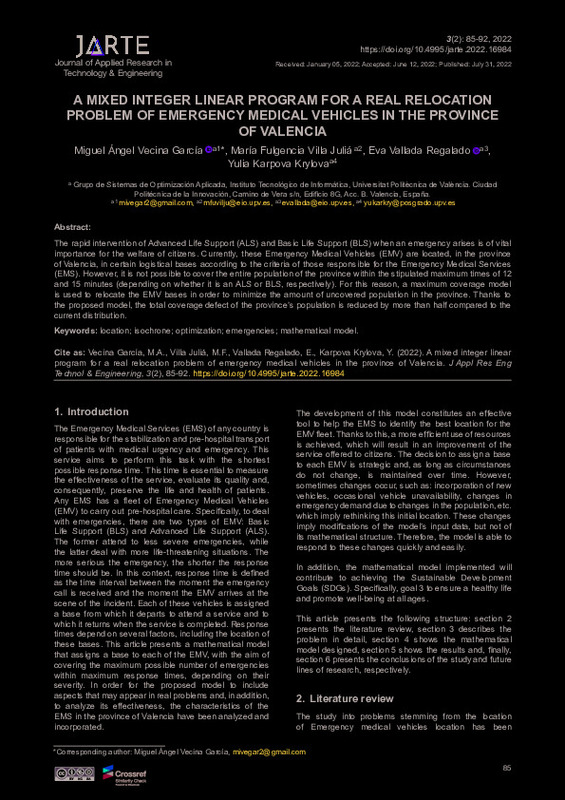JavaScript is disabled for your browser. Some features of this site may not work without it.
Buscar en RiuNet
Listar
Mi cuenta
Estadísticas
Ayuda RiuNet
Admin. UPV
Desde el lunes 3 y hasta el jueves 20 de marzo, RiuNet funcionará en modo de solo lectura a causa de su actualización a una nueva versión.
A mixed integer linear program for a real relocation problem of emergency medical vehicles in the province of Valencia
Mostrar el registro completo del ítem
Vecina García, MÁ.; Villa Juliá, MF.; Vallada Regalado, E.; Karpova Krylova, Y. (2022). A mixed integer linear program for a real relocation problem of emergency medical vehicles in the province of Valencia. Journal of Applied Research in Technology & Engineering. 3(2):85-92. https://doi.org/10.4995/jarte.2022.16984
Por favor, use este identificador para citar o enlazar este ítem: http://hdl.handle.net/10251/185192
Ficheros en el ítem
Metadatos del ítem
| Título: | A mixed integer linear program for a real relocation problem of emergency medical vehicles in the province of Valencia | |
| Autor: | ||
| Entidad UPV: |
|
|
| Fecha difusión: |
|
|
| Resumen: |
[EN] The rapid intervention of Advanced Life Support (ALS) and Basic Life Support (BLS) when an emergency arises is of vital importance for the welfare of citizens. Currently, these Emergency Medical Vehicles (EMV) are ...[+]
|
|
| Palabras clave: |
|
|
| Derechos de uso: | Reconocimiento - No comercial - Compartir igual (by-nc-sa) | |
| Fuente: |
|
|
| DOI: |
|
|
| Editorial: |
|
|
| Versión del editor: | https://doi.org/10.4995/jarte.2022.16984 | |
| Agradecimientos: |
This work is part of the project submitted to the Valencian Innovation Agency (AVI) in the 2021 call entitled iREVES (innovación en Reubicación de Vehículos de Emergencias Sanitarias): an intelligent decision-making tool. ...[+]
|
|
| Tipo: |
|









